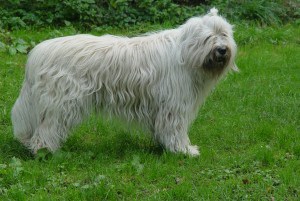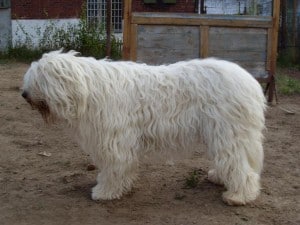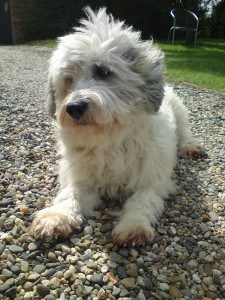
If they are not taught who is boss, severe discipline problems can arise. However, with a firm hand and patience it is quite possible to raise a South Russian Sheepdog who is an excellent companion. Training must be ongoing as SROs, particularly the males of the breed, will try to gain dominance not only as puppies but again when they near maturity.
Once they are aware who is in charge, however, they are great pets. They are good with children if they are aware the child is part of their family. They are quite protective of anything they consider theirs. They are for this reason very wary of strangers. It is best for the owner of a South Russian Sheepdog to discourage strangers from attempting to pet or caress them. When the dog becomes more comfortable with the person, he will seek out affection of his own volition.

The South Russian Sheepdog’s roots go back to herd dogs from Spain or Germany mixed with larger Russian breeds. In the mid to late 18th century, flocks of Spanish sheep made their way to Russia. Transporting one flock of sheep could take as much as two years, and dogs accompanied the flocks to keep them together and moving. While sources differ on what breed the dogs were, it is likely that they were either the Catalan Sheepdog or the German Schafpudel, both breeds with shaggy coats like the South Russian Sheepdog.

Brauner collected remaining South Russian Sheepdogs in the 1920s and helped reestablish the breed. The founded a breeding center of SROs in 1928 in Dzhankoi. South Russian Sheepdogs were first shown in 1930 at a German Dog Show. Unfortunately, since then the breed has fallen out of popularity and is once again quite rare.Because of their long coats, it is necessary to brush a South Russian Sheepdog at least once a week. Their coat is mostly self-cleaning and protects the dogs from both hot and cold weather.
